 We just returned from a spring road trip to the Great Smoky Mountains NP, staying 3 nights in Cherokee and 3 in Gatlinburg (Best Western of course!). Traffic on I-95 and I-26 was surprisingly heavy, but Cherokee was still in pre-season mode. We planned to follow many of the hikes featured on the Spring Wildflower Pilgrimage which is a 5 day educational program in its 60th year. Go to the site and download their program for some ideas of places to check out. We arrived one week before the program to beat the crowds, but it seems that Hiway 441 through the park is perpetually busy. There are also many road closings throughout the park including the Cades Cove Loop, Clingman's Dome, and the Roaring Fork loop. Parts of the Blue Ridge Parkway were also closed between the park and Asheville.
We just returned from a spring road trip to the Great Smoky Mountains NP, staying 3 nights in Cherokee and 3 in Gatlinburg (Best Western of course!). Traffic on I-95 and I-26 was surprisingly heavy, but Cherokee was still in pre-season mode. We planned to follow many of the hikes featured on the Spring Wildflower Pilgrimage which is a 5 day educational program in its 60th year. Go to the site and download their program for some ideas of places to check out. We arrived one week before the program to beat the crowds, but it seems that Hiway 441 through the park is perpetually busy. There are also many road closings throughout the park including the Cades Cove Loop, Clingman's Dome, and the Roaring Fork loop. Parts of the Blue Ridge Parkway were also closed between the park and Asheville.
 We started out from Cherokee as home base. Day 1 included a morning sunrise at the Oconaluftee Visitor Center. A good "warm up" shoot in that it is virtually 5 minutes from Cherokee. Don't you love it when you arrive at a site and there is no one in the parking lot? We had some fog in the field at the Mountain Farm Museum. There is also a 1.5 mile nature trail that runs along the Oconaluftee river. From here we returned to the hotel for breakfast, then a nap, then west to Bryson City to check out the Deep Creek area. There is a loop trail that takes you to 3 waterfalls. I was expecting the area to be empty but there were quite a few people there enjoying the sunny day. I was looking for clouds and overcast but bright sun and blue skies followed us for 3 days. We stopped in Bryson City for ice cream and visited with a gallery owner, Charles Heath. It's always nice to chat with the local artists. We ended the day at Mingo Falls, which is not in the park but easily accessible off of Big Cove Road near the park entrance. We saw one family there and that was it. This is probably the most impressive falls in the whole region.
We started out from Cherokee as home base. Day 1 included a morning sunrise at the Oconaluftee Visitor Center. A good "warm up" shoot in that it is virtually 5 minutes from Cherokee. Don't you love it when you arrive at a site and there is no one in the parking lot? We had some fog in the field at the Mountain Farm Museum. There is also a 1.5 mile nature trail that runs along the Oconaluftee river. From here we returned to the hotel for breakfast, then a nap, then west to Bryson City to check out the Deep Creek area. There is a loop trail that takes you to 3 waterfalls. I was expecting the area to be empty but there were quite a few people there enjoying the sunny day. I was looking for clouds and overcast but bright sun and blue skies followed us for 3 days. We stopped in Bryson City for ice cream and visited with a gallery owner, Charles Heath. It's always nice to chat with the local artists. We ended the day at Mingo Falls, which is not in the park but easily accessible off of Big Cove Road near the park entrance. We saw one family there and that was it. This is probably the most impressive falls in the whole region.


 Day 2 included our big adventure to Cataloochee, located on the east end of the park. We were up at 4:30 AM for the drive. The last 10 miles is on a one lane gravel road in the mountains. It was still pretty dark so we really didn't know what to expect. Dorian was nervous. But we made it and were greeted by a herd of elk on the main road, then a group of wild turkeys. There are several old buildings as this was a main settlement area similar to Cades Cove. We also hiked the first mile of the Caldwell Fork Trail, starting with a log bridge over the river. Now this "bridge" was literally a log, flattened on one side, spanning about 30 ft over a river. There was a rail on one side to hold onto (for your life!). With tripod and camera gear I didn't look down and just kept walking. As you reached the other side the log was getting narrower and bouncing! Ok, so I'm a wimp. We ended the day back in the park at the Mingus Mill and then to the visitor center parking lot for some shots of the redbuds and dogwood. It was dark when we finished.
Day 2 included our big adventure to Cataloochee, located on the east end of the park. We were up at 4:30 AM for the drive. The last 10 miles is on a one lane gravel road in the mountains. It was still pretty dark so we really didn't know what to expect. Dorian was nervous. But we made it and were greeted by a herd of elk on the main road, then a group of wild turkeys. There are several old buildings as this was a main settlement area similar to Cades Cove. We also hiked the first mile of the Caldwell Fork Trail, starting with a log bridge over the river. Now this "bridge" was literally a log, flattened on one side, spanning about 30 ft over a river. There was a rail on one side to hold onto (for your life!). With tripod and camera gear I didn't look down and just kept walking. As you reached the other side the log was getting narrower and bouncing! Ok, so I'm a wimp. We ended the day back in the park at the Mingus Mill and then to the visitor center parking lot for some shots of the redbuds and dogwood. It was dark when we finished.




 Day 3 we packed up and headed to Gatlinburg. On the way we pulled off for a few shots of the Oconaluftee River from 441. The sun was still behind the mountains so the valley stays in shadow until about 9:00. We stopped at the Newfound Gap viewing area and hiked a bit on the Appalachian Trail. Only 1972 miles to Katahdin, Maine from here! The afternoon included another hike on the Chestnut Top Trail where 73 meets Little River Road to look for wildflowers. There were many people there and all very friendly, pointing out their finds. We then proceeded down to Cades Cove...and yes the loop was really closed for repaving. On the way back we stopped at another pullout to check out the river. There are numerous points to stop and we took advantage of them. I can't understand why some people need to tailgate you on a national park road, they must be in a hurry to go somewhere! Traffic is bad in the Smokys so you just have to get off the road and walk a bit. We rolled into Gatlinburg and headed towards Cherokee Orchard Road which is part of a loop that includes the Roaring Fork Motor Nature Trail. Roaring Fork was closed for repairs so we went as far as we could and rewarded with a bear sighting...wow! My camera was in the back of the car so I made a small movie with my G10 and here is my fuzzy snap. Onwards to the Best Western.
Day 3 we packed up and headed to Gatlinburg. On the way we pulled off for a few shots of the Oconaluftee River from 441. The sun was still behind the mountains so the valley stays in shadow until about 9:00. We stopped at the Newfound Gap viewing area and hiked a bit on the Appalachian Trail. Only 1972 miles to Katahdin, Maine from here! The afternoon included another hike on the Chestnut Top Trail where 73 meets Little River Road to look for wildflowers. There were many people there and all very friendly, pointing out their finds. We then proceeded down to Cades Cove...and yes the loop was really closed for repaving. On the way back we stopped at another pullout to check out the river. There are numerous points to stop and we took advantage of them. I can't understand why some people need to tailgate you on a national park road, they must be in a hurry to go somewhere! Traffic is bad in the Smokys so you just have to get off the road and walk a bit. We rolled into Gatlinburg and headed towards Cherokee Orchard Road which is part of a loop that includes the Roaring Fork Motor Nature Trail. Roaring Fork was closed for repairs so we went as far as we could and rewarded with a bear sighting...wow! My camera was in the back of the car so I made a small movie with my G10 and here is my fuzzy snap. Onwards to the Best Western.


Day 4 started at the Cove Hardwood Nature Trail located at the Chimney Tops picnic area. We arrived at around 7:15 AM and there were a bunch of photographers there. Got some cold stares as we walked by them, guess they forgot how to say "good morning." I think some photographers are territorial and they feel like someone is infringing on their space. This compared to the wildflower hikers who were eager to share their discoveries. There was plenty of space so we just moved on. The flowers on this trail are great and the scenery and soft light very nice. It's a 1 mile loop through an old growth forest. The sun didn't poke through until around 9:00 and even then there were plenty of shady areas to keep working. This trail is highly recommended, in addition the West Prong of the Little Pigeon River also flows through the area. Lots of stuff to shoot. After our shoot we returned to Gatlinburg for a late breakfast and then a nap, then on to Laurel Falls. Some clouds began to roll in and I was happy. The trail to Laurel Falls is 1.3 miles on a paved road uphill. Definitely worth the hike. Getting to the base of the falls was a bit treacherous. The hike back was great downhill. On the drive back on Little River Road we stopped to photograph a field of blue phlox until dark.



Day 5 saw the results of my rain dance for the past week. The good thing about a rainy morning is that there is no sunrise, so we grabbed breakfast before we made our way to the Greenbrier entrance to the Porters Creek trailhead. From there we hiked in about a mile before it really started to rain hard. I love shooting in the drizzle but when the rain comes it gets tough. We saw a few other photographers on the trail looking for wildflowers. From here we went back into town and drove around the arts and crafts loop in Gatlinburg and it was back to the hotel for a nap. As the rain began to let up we headed back into the park on Newfound Gap Road and found that the mist and fog were settling in. The light quickly disappeared and we headed back for a nice Italian dinner.



We headed out the door on Day 6 and probably should have gotten an earlier start. There was nice morning light and some remnants of a nice sunrise. Back through the park one last time on Newfound Gap road, stopping at a few overlooks. By 9:00 what was left of the fog had burned off. At Newfound Gap it was quite chilly and very windy. I waited for a composition with the clouds but the light was harsh and the landscape burned out. It was on to Cherokee to fill the tank and grab some lunch for the road. From here we jumped onto the Blue Ridge Parkway south to 74, then to Waynesville where we took 276 through Pisgah National Forest then to 64 and eventually I-26 and I-95 to home. It's always a little sad to leave the mountains. The Interstate has a way of bringing you back to harsh reality.




Click here for my Smoky Mountains Spring gallery (everything!).















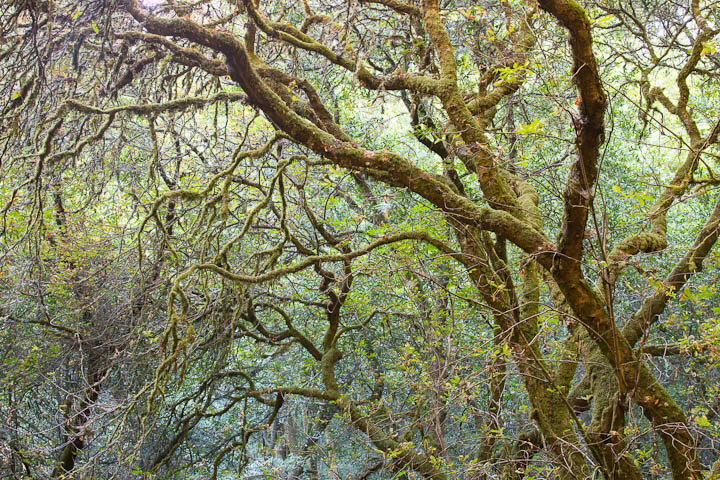


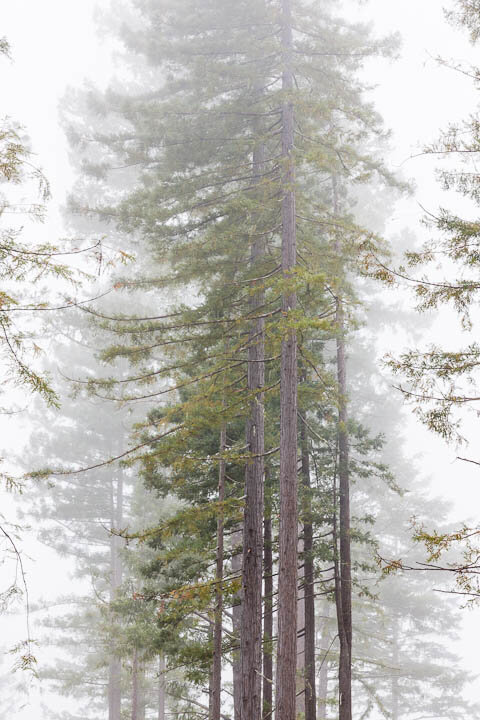

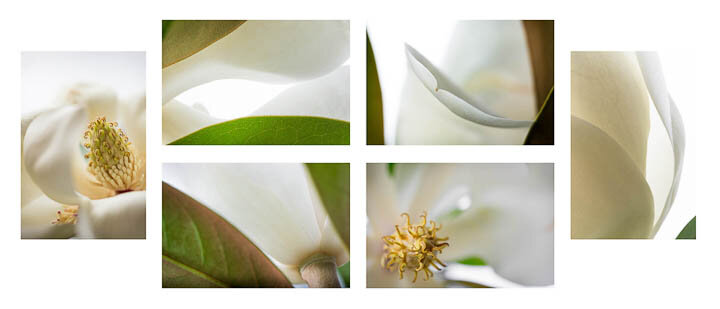

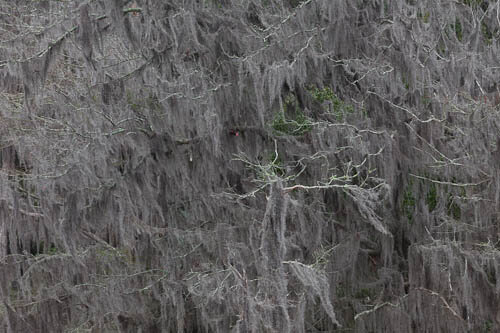






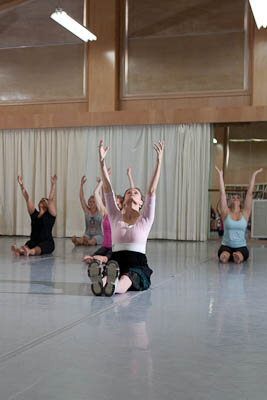




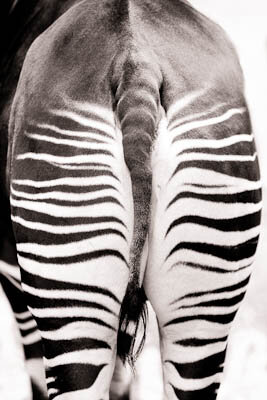






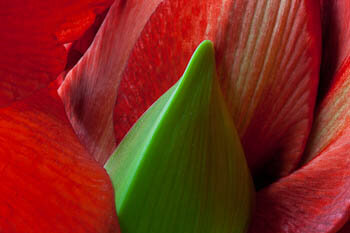
















 We just returned from a spring road trip to the
We just returned from a spring road trip to the  We started out from Cherokee as home base. Day 1 included a morning sunrise at the Oconaluftee Visitor Center. A good "warm up" shoot in that it is virtually 5 minutes from Cherokee. Don't you love it when you arrive at a site and there is no one in the parking lot? We had some fog in the field at the Mountain Farm Museum. There is also a 1.5 mile nature trail that runs along the Oconaluftee river. From here we returned to the hotel for breakfast, then a nap, then west to Bryson City to check out the Deep Creek area. There is a loop trail that takes you to 3 waterfalls. I was expecting the area to be empty but there were quite a few people there enjoying the sunny day. I was looking for clouds and overcast but bright sun and blue skies followed us for 3 days. We stopped in Bryson City for ice cream and visited with a gallery owner,
We started out from Cherokee as home base. Day 1 included a morning sunrise at the Oconaluftee Visitor Center. A good "warm up" shoot in that it is virtually 5 minutes from Cherokee. Don't you love it when you arrive at a site and there is no one in the parking lot? We had some fog in the field at the Mountain Farm Museum. There is also a 1.5 mile nature trail that runs along the Oconaluftee river. From here we returned to the hotel for breakfast, then a nap, then west to Bryson City to check out the Deep Creek area. There is a loop trail that takes you to 3 waterfalls. I was expecting the area to be empty but there were quite a few people there enjoying the sunny day. I was looking for clouds and overcast but bright sun and blue skies followed us for 3 days. We stopped in Bryson City for ice cream and visited with a gallery owner, 

 Day 2 included our big adventure to Cataloochee, located on the east end of the park. We were up at 4:30 AM for the drive. The last 10 miles is on a one lane gravel road in the mountains. It was still pretty dark so we really didn't know what to expect. Dorian was nervous. But we made it and were greeted by a herd of elk on the main road, then a group of wild turkeys. There are several old buildings as this was a main settlement area similar to Cades Cove. We also hiked the first mile of the Caldwell Fork Trail, starting with a log bridge over the river. Now this "bridge" was literally a log, flattened on one side, spanning about 30 ft over a river. There was a rail on one side to hold onto (for your life!). With tripod and camera gear I didn't look down and just kept walking. As you reached the other side the log was getting narrower and bouncing! Ok, so I'm a wimp. We ended the day back in the park at the Mingus Mill and then to the visitor center parking lot for some shots of the redbuds and dogwood. It was dark when we finished.
Day 2 included our big adventure to Cataloochee, located on the east end of the park. We were up at 4:30 AM for the drive. The last 10 miles is on a one lane gravel road in the mountains. It was still pretty dark so we really didn't know what to expect. Dorian was nervous. But we made it and were greeted by a herd of elk on the main road, then a group of wild turkeys. There are several old buildings as this was a main settlement area similar to Cades Cove. We also hiked the first mile of the Caldwell Fork Trail, starting with a log bridge over the river. Now this "bridge" was literally a log, flattened on one side, spanning about 30 ft over a river. There was a rail on one side to hold onto (for your life!). With tripod and camera gear I didn't look down and just kept walking. As you reached the other side the log was getting narrower and bouncing! Ok, so I'm a wimp. We ended the day back in the park at the Mingus Mill and then to the visitor center parking lot for some shots of the redbuds and dogwood. It was dark when we finished.



 Day 3 we packed up and headed to Gatlinburg. On the way we pulled off for a few shots of the Oconaluftee River from 441. The sun was still behind the mountains so the valley stays in shadow until about 9:00. We stopped at the Newfound Gap viewing area and hiked a bit on the Appalachian Trail. Only 1972 miles to Katahdin, Maine from here! The afternoon included another hike on the Chestnut Top Trail where 73 meets Little River Road to look for wildflowers. There were many people there and all very friendly, pointing out their finds. We then proceeded down to Cades Cove...and yes the loop was really closed for repaving. On the way back we stopped at another pullout to check out the river. There are numerous points to stop and we took advantage of them. I can't understand why some people need to tailgate you on a national park road, they must be in a hurry to go somewhere! Traffic is bad in the Smokys so you just have to get off the road and walk a bit. We rolled into Gatlinburg and headed towards Cherokee Orchard Road which is part of a loop that includes the Roaring Fork Motor Nature Trail. Roaring Fork was closed for repairs so we went as far as we could and rewarded with a bear sighting...wow! My camera was in the back of the car so I made a small movie with my G10 and here is my fuzzy snap. Onwards to the Best Western.
Day 3 we packed up and headed to Gatlinburg. On the way we pulled off for a few shots of the Oconaluftee River from 441. The sun was still behind the mountains so the valley stays in shadow until about 9:00. We stopped at the Newfound Gap viewing area and hiked a bit on the Appalachian Trail. Only 1972 miles to Katahdin, Maine from here! The afternoon included another hike on the Chestnut Top Trail where 73 meets Little River Road to look for wildflowers. There were many people there and all very friendly, pointing out their finds. We then proceeded down to Cades Cove...and yes the loop was really closed for repaving. On the way back we stopped at another pullout to check out the river. There are numerous points to stop and we took advantage of them. I can't understand why some people need to tailgate you on a national park road, they must be in a hurry to go somewhere! Traffic is bad in the Smokys so you just have to get off the road and walk a bit. We rolled into Gatlinburg and headed towards Cherokee Orchard Road which is part of a loop that includes the Roaring Fork Motor Nature Trail. Roaring Fork was closed for repairs so we went as far as we could and rewarded with a bear sighting...wow! My camera was in the back of the car so I made a small movie with my G10 and here is my fuzzy snap. Onwards to the Best Western.











 Today Harry Sandler twisted my arm (ouch!) to catch sunrise at Big Talbot. There was a chance of fog and my fingers were crossed. We were up at 4:45 and made it there for the pre-dawn light. No fog, no clouds, no wind, and plenty of no-see-ums. We hiked out on Blackrock Trail and didn't see a soul. There's something surreal about arriving at Big Talbot in the pre-dawn at low tide. The water is still and the fallen trees surround you. You can hear the birds and the water is almost silent. If it wasn't for the gnats buzzing at your eyes, ears, and every place you did not manage to spray, it would be most pleasant. One day I will experience the fog at this location, today was not the day. After our shoot we drove onto Amelia Island and had breakfast at the Parkway Grill in Fernandina (right on AIA past Harris Teeter). Great food and good coffee. Harry and I said our goodbyes and he was off on his drive back to NY.
Today Harry Sandler twisted my arm (ouch!) to catch sunrise at Big Talbot. There was a chance of fog and my fingers were crossed. We were up at 4:45 and made it there for the pre-dawn light. No fog, no clouds, no wind, and plenty of no-see-ums. We hiked out on Blackrock Trail and didn't see a soul. There's something surreal about arriving at Big Talbot in the pre-dawn at low tide. The water is still and the fallen trees surround you. You can hear the birds and the water is almost silent. If it wasn't for the gnats buzzing at your eyes, ears, and every place you did not manage to spray, it would be most pleasant. One day I will experience the fog at this location, today was not the day. After our shoot we drove onto Amelia Island and had breakfast at the Parkway Grill in Fernandina (right on AIA past Harris Teeter). Great food and good coffee. Harry and I said our goodbyes and he was off on his drive back to NY.





